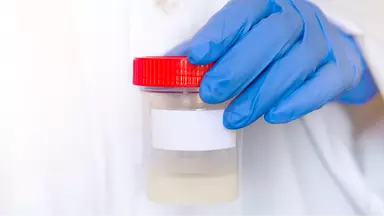A man who was unaware that he had a rare cancer-carrying mutation donated sperm, which resulted in the births of 67 children.
Now, it has been revealed that 10 of those children have since been diagnosed with cancer, with 20 also having been found to have the same gene variant.
The case initially came to the forefront when two families contacted the fertility clinics to reveal that their children had developed cancer linked to a rare genetic variant called TP53.
According to Medline Plus, this variant can cause a genetic condition called Li-Fraumeni syndrome (LFS), which can increase the risk of developing particular cancers like leukaemia.
Those with the gene variant are advised to receive MRI body scans and scans of the brain regularly throughout their life.


This incident has resulted in questioning around the number of allowed donations (Getty Stock Image)
However, this is relatively new information as it was not known at the time of the donations, the majority of which were in 2008.
The Guardian also reported that the man was considered to be in good health.
Dr Edwige Kasper, a biologist from Rouen University Hospital in France, said: “I analysed the variant using population and patient databases, computer prediction tools and the results of functional trials and came to the conclusion that the variant was probably cancer-causing and that children born from this donor should receive genetic counselling.”
There is currently no international standard limit for sperm donation, but the bank where the man made the donations, The European Sperm Bank, has a limit of 75 per donor.
In the case of this donor, they added that more than 67 children had been conceived; however, it was not in their policy to disclose exact numbers.
They also said that the relevant clinics had been alerted.
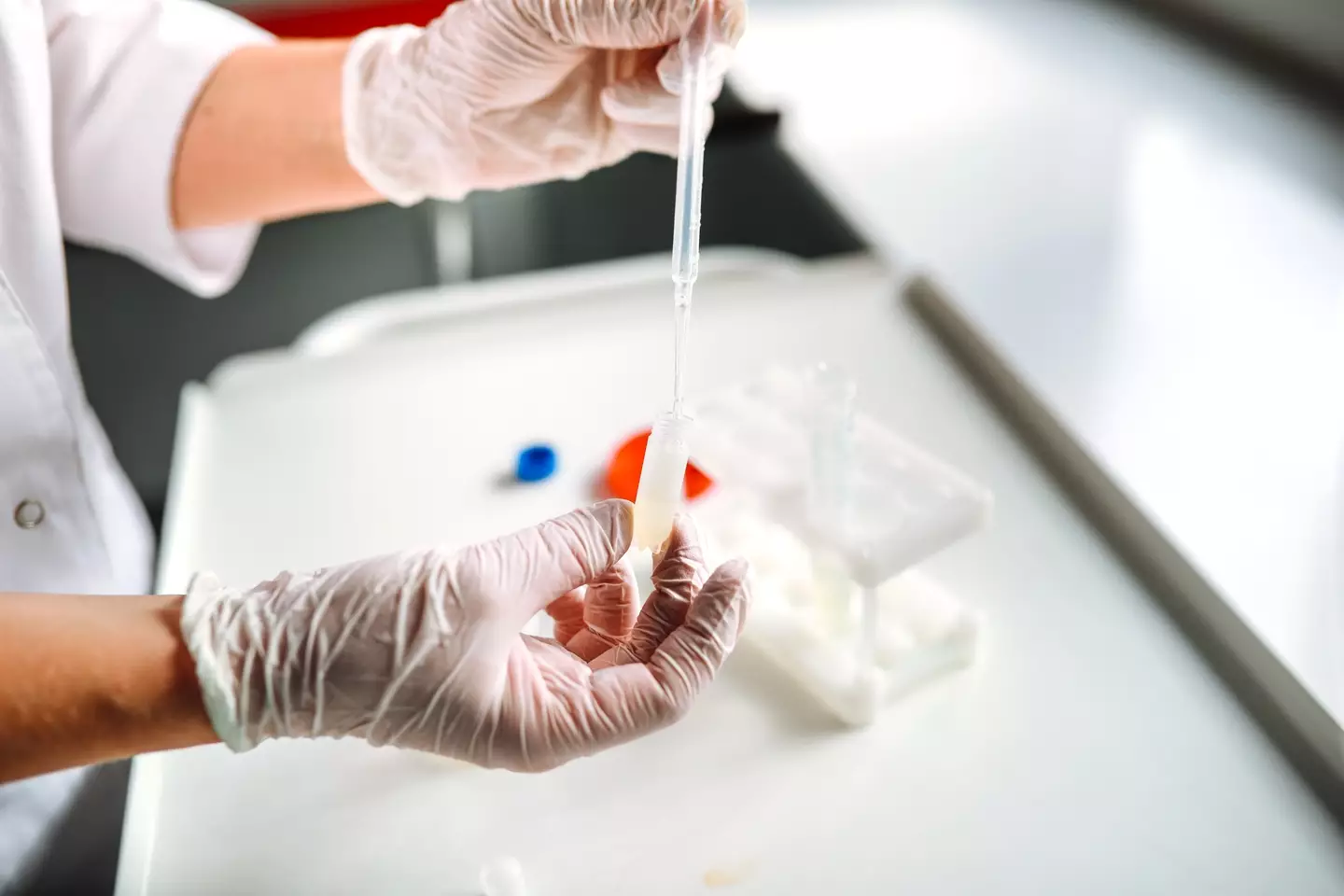

The man was unaware that he carried a cancer-causing gene (Getty Stock Image)
However, this case, resulting in many children being born between 2008 and as recent as 2015, has raised some concerns about the internationally agreed limits on the use of donor sperm.
Kasper spoke about the immediate need for change to prevent issues like this in the future, adding: “We need to have a European limit on the number of births or families for a single donor.
“We can’t do whole-genome sequencing for all sperm donors – I’m not arguing for that. But this is the abnormal dissemination of genetic disease. Not every man has 75 children across Europe.”
Nicky Hudson, a professor at De Montfort University in Leicester, reiterated that this particular incident has highlighted the risks associated with moving sperm across borders.
She said: “The important issues at stake here relate to the large number of affected children – which would be limited if only used within one country according to local limits – and the challenge of tracing the families, who can now span multiple countries.


At least 67 children were conceived with this man’s sperm (Getty stock images)
“Whilst these kinds of cases have thankfully been rare, we need to consider ways to limit the possibility of this scenario becoming more frequent in future by coordinating international practice. At the very least we need better systems for tracking donor usage and of informing recipients of this.”
A spokesperson for The European Sperm Bank told The Guardian that they were ‘deeply affected by this case’, adding that the donor had been extensively tested; however, ‘it is scientifically simply not possible to detect disease-causing mutations in a person’s gene pool if you don’t know what you are looking for’.
They added: “We welcome continued dialogue on setting an internationally mandated family limit and have advocated for this on several occasions. This is also why we have proactively implemented our own international limit of 75 families per donor.”
UNILAD has contacted The European Sperm Bank for further comment.
Featured Image Credit: Getty Stock Image
Topics: Cancer, Health, News, World News
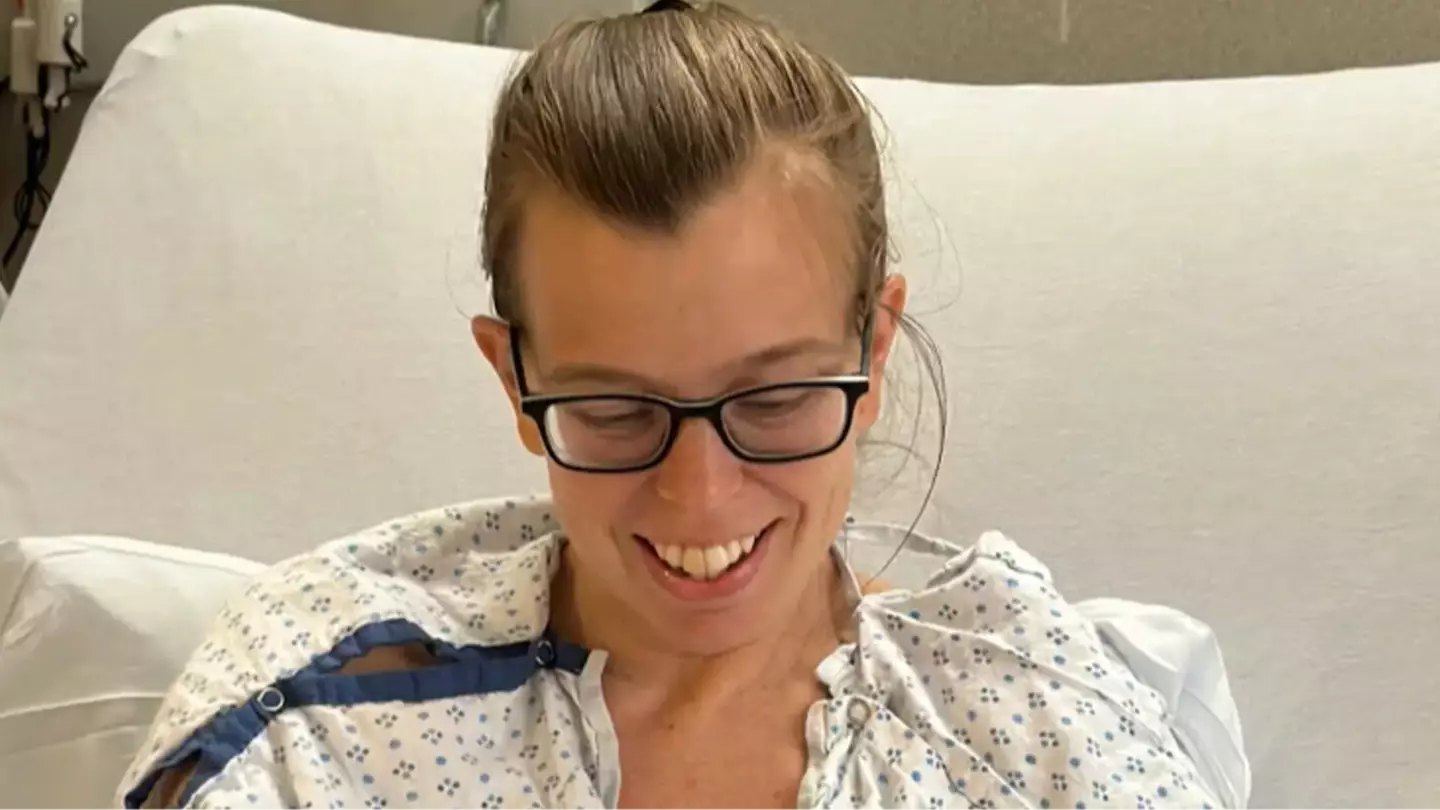

One woman who was confident she didn’t have cancer, and was reassured by doctors ahead of her diagnosis that it wasn’t anything too concerning, had a pretty devastating surprise during her pregnancy.
Pregnancy can put a strain on anyone at the best of times, and most are just happy and hoping to deliver a healthy bouncing baby.
There likely isn’t much more frightening than to learn that while pregnant, you have a life-threatening illness as well.
Well, 39-year-old Michelle Kaba from New Jersey had to deal with this reality, but the difference is doctors insisted that there wasn’t anything she should be concerned about.
Speaking about her cancer diagnosis in a candid report for the Stupid Cancer organization, she said: “When I was pregnant, I was diagnosed with pancreatitis. I went through 4 different hospital stays in the span of 5.5 months and was placed on a strict, low-fat diet.


Kaba was initially told that the growth could be removed after she had been given birth but complications prevented this (Stupid Cancer)
“After the birth, the pancreatitis was going to be gone for good and life would go back to ‘normal’.
“They said the growth they found while I was 20 weeks pregnant was benign, and it just needed to be removed after our baby was born. The doctors weren’t concerned, so neither was I.”
However, it soon turned out that the growth was no longer benign; in fact, it had even grown larger. Another biopsy was taken, and it was eventually revealed that Kaba had ampullary cancer.
After multiple tests and second opinions, Kaba and her family got some good news: the cancer hadn’t spread, it was still in stage one, and could be removed via surgery after some chemotherapy.
Speaking about her difficult road to recovery, she added: “My Whipple Procedure was successful.
“With part of my pancreas and small intestine removed along with my whole gallbladder, the tumor was gone and the pathology reports confirmed there was no longer cancer in my body.
“In a 3-week period, I was diagnosed and freed from cancer, all while becoming a new mom. It was a complete whirlwind that I still haven’t fully processed.”
What are the symptoms of ampullary cancer?
According to the Cleveland Clinic, ampullary cancer is a rare and aggressive type of carcinoma that forms in an area of your body called the ampulla of Vater.
This area is a small opening where your bile duct and pancreatic duct join.


Kaba received good news that her cancer was in Stage 1 and could eventually be removed (Stupid Cancer)
Due to its location in the body, there are often fears that the cancer can spread to the liver, pancreas and other digestive system organs.
Regarding symptoms, people with this type of cancer can experience jaundice – yellowing of the skin and eyes.
Other ampullary cancer symptoms include:
- Unexplained weight loss
- Loss of appetite
- Nausea and vomiting
- Abdominal pain
- Back pain
- Itchy skin
- Fever
- Diarrhea
- Anemia
- Pancreatitis
- Rectal bleeding
- Fatty poops (may be greasy and clay-colored)
If you begin to experience these symptoms, it is advised you speak to your healthcare professional and get tested.
Featured Image Credit: Handout/Stupidcancer.org


A weightlifter was given only years to live after he ignored these symptoms that could have pointed to his health woes earlier.
A British weightlifter ended up in a coma as doctors discovered a serious health concern.
31-year-old Scott Hinch was told that he may only have 3 to 5 years to live and this news rightly floored him.
Doctors only made the discovery after he was brought to the Nevill Hall Hospital in Abergavenny, Wales, after suffering a seizure on his way to work back in August 2019.
Hinch has since said that he wishes he had paid closer attention to the symptoms and hadn’t brushed them off.
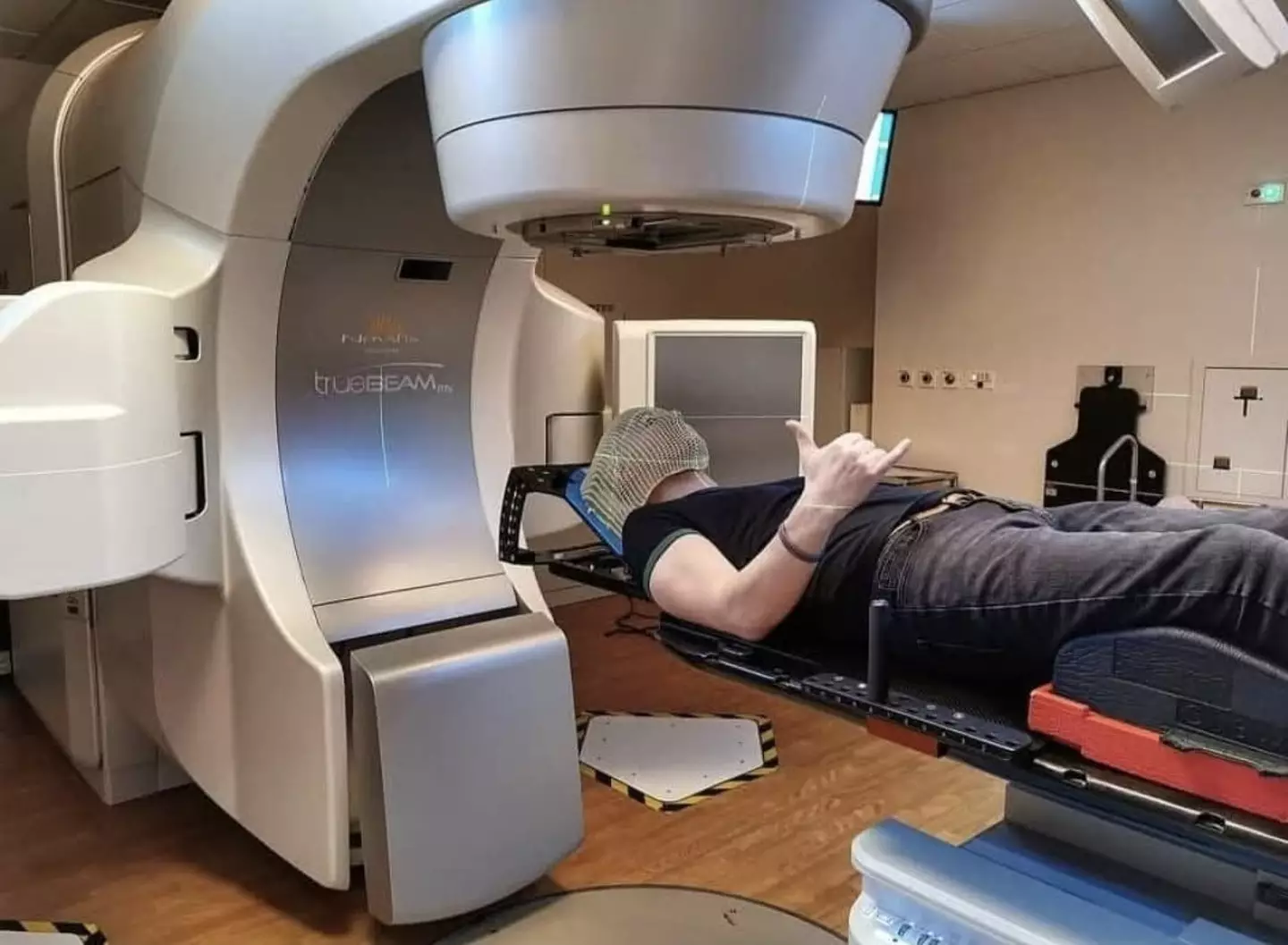

Hinch lived an active and healthy lifestyle before his diagnosis(SWNS)
While at the hospital, he was put in an induced four-day coma and, after waking up, an MRI revealed a grade 2 astrocytoma, a type of tumor that usually develops in the brain or spinal cord.
On September 4 of that year, Scott underwent emergency surgery to partially remove the tumor and started his first round of treatment to keep the cancer at bay. This entailed seven weeks of radiotherapy and 12 cycles of chemotherapy.
Prior to his cancer diagnosis, Hinch lived a healthy and active lifestyle and suffered no significant health issues.
He did note that he occasionally did experience headaches and nosebleeds but thought it was down to over working, working out and not drinking enough water.
He said: “Looking back, I now realize there were signs. Headaches, nosebleeds, things I chalked up to long work hours.
“Maybe heavy training at the gym and not drinking enough water. I even went to the opticians, but nothing was picked up.”
While it is over 5 years on from his initial diagnosis, Hinch still suffers to this day due to his cancer returning two years later after the end of his treatment at the end of 2023.
Following this, he underwent more chemotherapy and treatment, and in 2025, is undergoing his third round of treatment for his tumor.
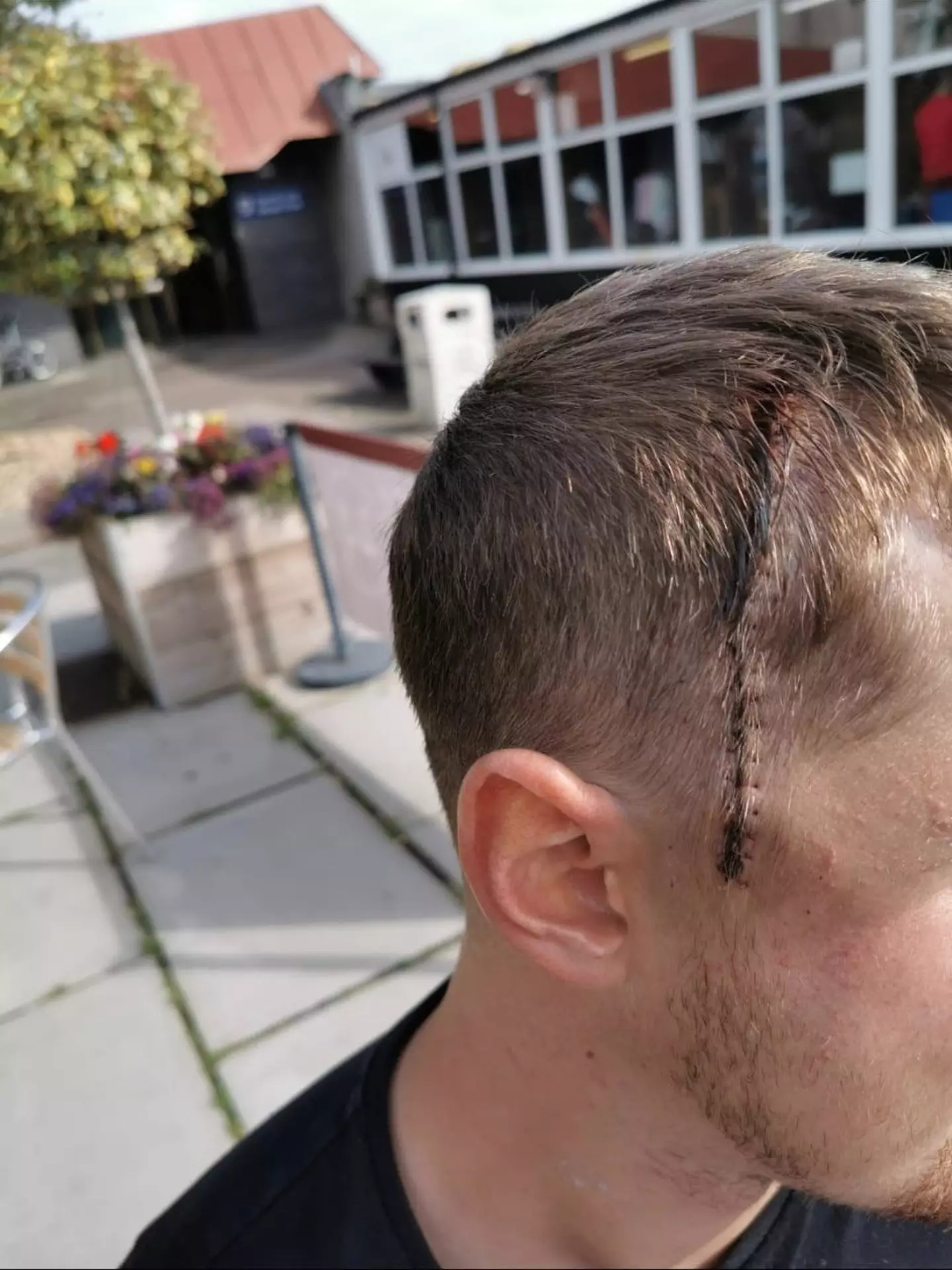

Hinch has had multiple rounds of treatment as his cancer came back(SWNS)
He added: “I take it one month at a time.
“The fatigue is relentless and most days I can’t leave the house.
“But I’m still here, and that’s something I’m grateful for.”
His mum, Fiona, has become his full-time carer and he is now ‘dependent on her’ for everything.
Fiona has also spoken on the need for greater research and awareness regarding brain tumors and has emphasized the difficulty of seeing her son go through treatment.
She said: “Watching my son go through the trauma of surgery and three rounds of treatment for brain cancer has been heartbreaking.
“No family should have to experience the fear, uncertainty and pain that we have.
“We need better outcomes, kinder treatments, and ultimately a cure.”
To help raise awareness, his mum, Fiona and auntie, Lyndsey, are taking on the 200k in May Your Way challenge to raise money for the Brain Tumour Research Charity.
Featured Image Credit: SWNS
Topics: World News, Cancer, Health, News


Medics have issued a warning about a little-known change to your fingertips which could be an early indication of cancer.
According to the American Cancer Society, lung cancer stands as the second-most common cancer in men and women in the US, excluding skin cancer.
The danger of it is that often symptoms don’t tend to appear until harmful cells have spread throughout the body and are often respiratory when they do.
Well-documented signs of the deadly condition include wheezing, a persistent cough and breathlessness, as well as blood or phlegm.
But medics are now warning there is actually a lesser-known red flag that can be spotted in a minute detail on our hands.


They are warning to check your fingers and nails (Getty Images)
Health professionals have issued a dire warning for people to pay attention to any changes in their hands, specifically swelling in the fingers and a change to the nail shape, which has been linked to the disease.
The condition, known medically as clubbed fingers, appears as changes to the nails on our fingers and toes, and is mostly a symptom than a disease itself, the Cleveland Clinic notes.
How this happens is thought to occur as a result of substances being released by lung tumors that inflame the bones in fingers, as well as toxic chemicals that the body produces that develop the cancer.
A former patient only had the clubbed fingers symptom when they were diagnosed and is likewise warning others to look out for the tell-tale sign.
Brian Gemmell, a fitness instructor from Scotland, UK, told The Mirror: “Go and see your doctor—that’s what a GP is for.”
“Go as soon as you can,” he urged.
Gemmell claimed he never suffered a cough and was ‘feeling healthy.’
He added: “I wasn’t coughing up blood, I wasn’t breathless. My one and only symptom was clubbing of the fingers, where all your fingers swell up and when you put your fingers together you can’t see a diamond.
“That was my only symptom. Straightaway, my GP had an idea of what it was. He sent me straight for a chest X-ray and referred me to a respiratory consultant.”
To test yourself if you have finger clubbing, medics say there is a screening known as a Schamroth window test that can be carried out from home.


Most signs of lung cancer are respiratory (Getty Images)
The test involves pressing two opposing fingers against each other to check for a diamond shape.
If you don’t see a small diamond, it could be an indication of finger clubbing.
The warning comes as a study in 2012 by Dr Malay Sarkar, an India-based lung cancer specialist, discovered lung cancer is the primary cause of finger clubbing, linked to almost 90 percent of cases, while nail clubbing affects around five to 15 percent of people with lung cancer.


Coughing isn’t the only sign (Getty Images)
However, Cancer Research UK adds that not everyone with finger clubbing will have lung cancer but still advises those who do to seek medical advice.
Dr Helen Piercy also told the news outlet: “If you notice any signs or symptoms that concern you, see your GP.
“First phone for an appointment. You will be assessed. You will be invited in, if you need to be seen face-to-face. Don’t be afraid. Pick up the phone.”
Featured Image Credit: Getty stock images


Joe Biden’s ‘aggressive’ cancer diagnosis has been explained as former presidents issue well-wishes.
On Sunday (May 18), the office of the 82-year-old and former president released a statement, confirming Biden has been diagnosed with prostate cancer which has spread to the bones.
Biden’s reps confirmed the former 46th president of the United States was seen by medics last week for urinary symptoms who found a new ‘prostate nodule.’
The statement added: “On Friday he was diagnosed with prostate cancer, characterized by a Gleason score of 9 (Grade Group 5) with metastasis to the bone.
“While this represents a more aggressive form of the disease, the cancer appears to be hormone-sensitive which allows for effective management.
“The president and his family are reviewing treatment options with his physicians.”


Biden’s office has confirmed the diagnosis (Bruce Glikas/WireImage)
What is prostate cancer?
According to the American Cancer Society, prostate cancer is the most common cancer in men in the US other than skin cancer, affecting around one in eight men.
The Mayo Clinic describes it as a ‘growth of cells’ that start in the prostate, a small gland found just below the bladder that produces semen.
It is usually detected early and grows slowly, with the clinic adding that most people diagnosed with prostate cancer are ‘cured.’
Essentially, many men can live with it for decades without needing treatment, though symptoms don’t always appear until the cancer is already developed and advanced.
Symptoms include needing to urinate more frequently, difficulty in peeing, straining or taking a long time while peeing, weak flow, and/or blood in urine or in semen, according to the NHS.
Signs that it may have spread further include bone and back pain, a loss of appetite, testicle pain and weight loss.


Prostate cancer affects the male reproductive system (Getty Images)
What is the Gleason score?
The Gleason score is used by medics to grade prostate cancer, according to Cancer Research.
The grade infers how much the cancer cells look like normal cells and how likely they are to grow or how aggressive they appear.
There are five grade groups with Grade Group 1 considered the least aggressive while Grade Group 5 is the most.
As Biden has a Gleason score of nine, he’s in the highest category, meaning the cells look very abnormal and is likely to grow quickly.


Biden with his grandson, Beau and wife, Jill, after his farewell address from the White House in January (Mandel Ngan – Pool/Getty Images)
What does the diagnosis mean for Joe Biden?
Biden presented to doctors with one of the most common symptoms of prostate cancer, urinary issues, though it appears the cancer has already spread to his bones.
While it is ‘not uncommon’ for older men in their 80s to be diagnosed with prostate cancer, Biden’s Gleason grade indicates it is ‘most advanced than most men would encounter’, Dr Ryan Clearly, a urologist at MedStar Health told the BBC.
Although Biden’s exact case is unknown, Dr Clearly added: “Generally about a third of patients will still be alive after five years of metastatic prostate cancer.”
Doctors also said Biden’s cancer is hormone-sensitive, meaning they can effectively ‘manage’ his prognosis by taking medications that block or lower the amount of hormones in the body to prevent further growth.
Dr Jamin Vinod Brahmbhatt, a urologist at Orlando Health Medical Group, told the news outlet that while such treatments are not ‘curative’ to the cancer, there are ‘more medical options to stabilise the patient and control the cancer, but it never gets rid of the cancer completely.’
Biden and his family are said to be reviewing treatment options.


Obama and Trump have both issued statements (MANDEL NGAN/AFP via Getty Images)
What has Donald Trump and Barack Obama said about Biden’s cancer?
The 44th POTUS, Barack Obama, issued a statement after hearing the news.
He wrote in a post on Twitter: “Michelle and I are thinking of the entire Biden family.
“Nobody has done more to find breakthrough treatments for cancer in all its forms than Joe, and I am certain he will fight this challenge with his trademark resolve and grace.
“We pray for a fast and full recovery.”
Obama’s comment comes as Biden was passionate about tackling the cancer death rate while in office, following the death of his eldest son Beau who died of glioblastoma brain tumor in 2015.
Biden’s predecessor and successor, President Trump also sent a message of support, writing on Truth Social: “Melania and I are saddened to hear about Joe Biden’s recent medical diagnosis.
“We extend our warmest and best wishes to Jill and the family, and we wish Joe a fast and successful recovery.”
